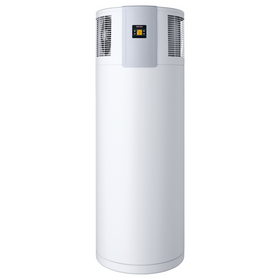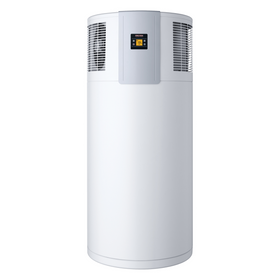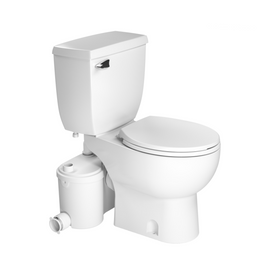
A Guide to the Most Affordable Types of Homes
Last Updated: Feb 11, 2025While home values have increased, incomes have not kept pace. In 1950, a family needed only a single income to buy a home. Today, many families with two full-time salaries struggle to buy their first home.
Unfortunately, your dream home in your ideal neighborhood may still be out of the question. But, a little research and creativity could land you in exactly what you never knew you wanted. Today, we're taking a look at the most affordable types of homes you can afford to buy.
Let's start with a brief overview of your options.
- Manufactured Home: A type of prefabricated home assembled in a factory and transported to your property.
- Modular Home: A kind of prefabricated house consisting of modules created in a factory and assembled side-by-side, end-to-end, or stacked on your property.
- Mobile Home: A type of prefabricated home built on wheels to be towed by a vehicle.
- Container Home: A kind of dwelling made from steel shipping containers stacked and arranged to fit your unique home needs.
- Monolithic Dome Home: A type of home cast in a solid concrete shell on-premise that can be joined to create a multi-dome home.
- Tiny Home: A kind of home characterized by its size of 500 square feet or less.
Table of Contents
- What Is a Prefab Home?
- What Is a Mobile Home?
- What Is a Manufactured Home?
- What Is a Modular Home?
- What Is a Tiny Home?
- What Is a Container Home?
- What Is a Monolithic Dome Home?
- Pros and Cons
- Affordable Homes Are Available

What Is a Prefab Home?
Affectionately termed "Pre-fab" (for prefabricated), these types of houses are built in a factory and delivered to your property for final assembly. This fact alone significantly reduces the costs of building and cleanup.
Manufactured and Mobile homes are, for the most part, complete when they arrive at your location. Set one of these new homes down, and you'll be ready to move in and decorate almost immediately.

What Is a Mobile Home?
Mobile homes derive their name from the key benefit of having wheels. These homes are ideal for families who prefer not to be tied down to a physical location. Mobile homeowners enjoy the flexibility of relocating for a better job and moving whenever they feel like trying a new town. And they can be purchased for as little as $25,000.
When the time comes to move, these homes can be towed behind a suitable vehicle anywhere. Mobile homes can be parked in designated mobile home parks or on land using wheel blocks to prevent them from moving independently. Be sure you verify any permits needed to move your home before hitching it up.
Because mobile homes have wheels, most states will require a title to be maintained through the DMV. Click here to learn more about mobile home requirements in your state.

What Is a Manufactured Home?
Manufactured homes are similar to mobile homes in structure but lack the wheels for mobility. However, manufactured homes can be moved with the help of a larger truck. Moving proves a little more complicated than mobile homes in that you'll need proper licenses and a professional moving company, running $5,000-8,000 for a move within 50 miles.
There are a variety of manufactured homes for sale, ranging in size and features. A single wide two bedroom, two bath manufactured home can be purchased for as little as $45,000. "Single wide" homes range from 500-1,200 square feet. Prices climb for larger homes ("double-wides"), with added features like porches, granite countertops, and luxury flooring. According to Homes Direct, double wides are about $100,000 and range in size from 1,000 to 2,200 square feet.
When a new manufactured home is delivered to your site, it can be set down on a permanent foundation or a temporary foundation such as steel piers or concrete blocks. Multi-section manufactured homes are delivered in finished pieces and assembled on-site. As it's pieced together, the team will attach existing utilities to the house, so you must first have those set up.

What Is a Modular Home?
Perhaps you're dedicated to a particular location and don't foresee a need to move. In this case, a modular home is an incredibly affordable solution and very much like any other site-built home. Because modular homes are built from prefabricated pieces, they can be assembled and arranged in various ways to create just the home you want.
Your home will arrive in finished pieces on moving day and will be assembled with a crane on a permanent foundation. Depending on your chosen home, it can take just a few weeks to assemble, connect utilities, secure roofing, and finish garages and decks. Modular homes start at $53,000, increasing with size and features.

What Is a Tiny Home?
Tiny Homes have gained popularity recently for their incredibly low cost. While small-space living isn't for everyone, a single person or even a couple can buy a new tiny home for as little as $10,000.
This type of home is categorized only by its size of under 500 square feet. Tiny homes are available as mobile homes (with wheels), manufactured homes (without wheels), and built on-site.
There is no limit to your creativity in buying a tiny home. Build one from found materials, convert a shed, put it on a foundation, or tow it behind your car. Depending on your local regulations, you can set tiny homes down on land, in designated parks, or even in the backyard of another house. See our house feature to learn what it's like to live in a tiny home.
Shop All Special Offers
Shop Special Offers on vetted Home Improvement products at low prices while supplies last.

Stiebel Eltron Accelera 300 E Heat Pump Water Heater
Stiebel Eltron
Out of Stock

Victory Range Hoods Sunset 600 CFM White Flush Ceiling Mount Dimmable LED Range Hood
Victory Range Hoods
In Stock

Victory Range Hoods Sunset 600 CFM Flush Ceiling Mount Dimmable LED Range Hood
Victory Range Hoods
In Stock

Stiebel Eltron Accelera 220 E Heat Pump Water Heater
Stiebel Eltron
In Stock

Quickscrews Cabinet Install Screws
Quickscrews
In Stock

Victory Range Hoods Horizon Matte White Flush Ceiling Mount Range Hood with Dimmable LED Lights
Victory Range Hoods
In Stock

Saniflo Sanibest Pro Combo Macerator System
Saniflo
In Stock

Blanco PRECIS Super Single Undermount SILGRANIT Kitchen Sink
Blanco
In Stock
9 Colors

Blanco PRECIS 30 Undermount Single Bowl SILGRANIT Kitchen Sink
Blanco
In Stock
9 Colors

Hauslane Chef 36" UC-PS18 860 CFM Ducted Undercabinet Range Hood
Hauslane
In Stock
2 Colors

What Is a Container Home?
Sustainable builders are always looking for new ways to recycle. They've hit the nail on the head with trendy container homes. These homes are built from recycled steel shipping containers that can be purchased for an almost giveaway price of $1,400 each.
If you've never built a container home, you'll need to seek the expertise of a container home builder who can help you visualize and plan the end result. Shipping containers can be creatively stacked and arranged to build multi-story homes of almost any style.

What Is a Monolithic Dome Home?
Dome homes are arguably the cheapest site-built home available. These homes are constructed of a steel frame, covered in a fabric form, and then sprayed first with foam and concrete. The result is a solid structure capable of withstanding all types of natural disasters, including tornadoes, hurricanes, and earthquakes.
Dome homes can consist of just one dome or several domes connected. A single livable dome home can be built for $60,000, but the price does climb as windows and doors are cut out and as more domes are added. Still, finished dome homes are 10-15% cheaper to build than traditional site-built box homes. Dome homes require a foundation and are not moveable once completed.

Pros and Cons
The benefit of living in these types of homes is simple. You can often save money upfront, and you save money over time with lower operating costs. You will also have a smaller environmental footprint, as your home will require less energy and fewer materials to build and operate. Not having a large home saves you time with less cleaning, less time (and money) furnishing the house.
The downside might be obvious: less space. If you have a lot of clothes, furnishings or mementos, you'll have to pare down. However, minimalist living can be a plus, as it can simplify your life and provide more freedom.

Affordable Homes Are Available
Buying a home used to be a given for most families, but many households struggle to make ends meet today. Fewer still can save up for a hefty down payment. As more and more families look for affordable ways to buy a home and start their lives, more great options are becoming available.
Prefabricated homes, container homes, and monolithic dome homes are just some of the most affordable new homes. Keep in mind that you'll need to add additional costs for land purchase, a foundation, taxes, transportation, and permits. Of course, you could always save and buy an existing fixer-upper home as well.
Laura Bourland
Laura grew up in the California suburbs, far removed from environmentalism, but nature always has a way. She uprooted her life in 2015, moving to the countryside of Washington to live a more sustainable and simple life on 12 acres. She and her fiancee are learning on the job as they attempt everything from gardening and natural pest control to eco-friendly building and home improvement.
